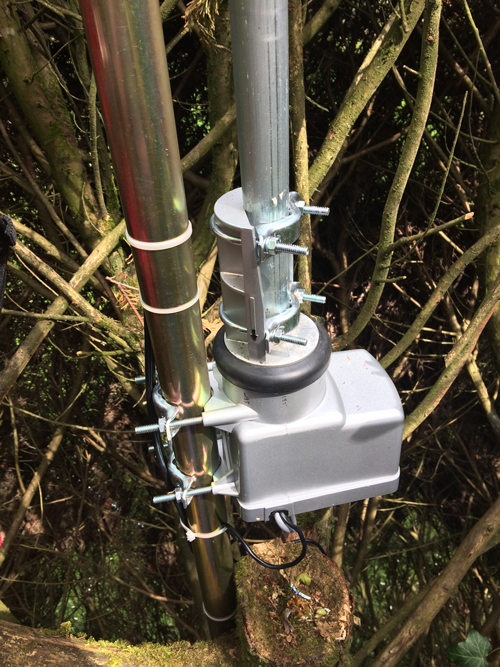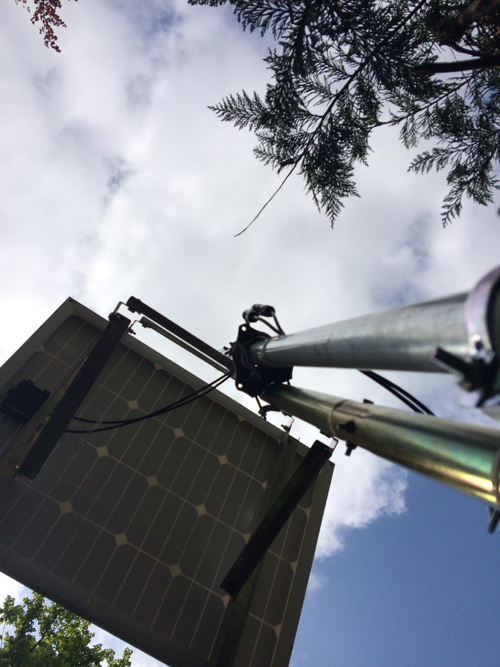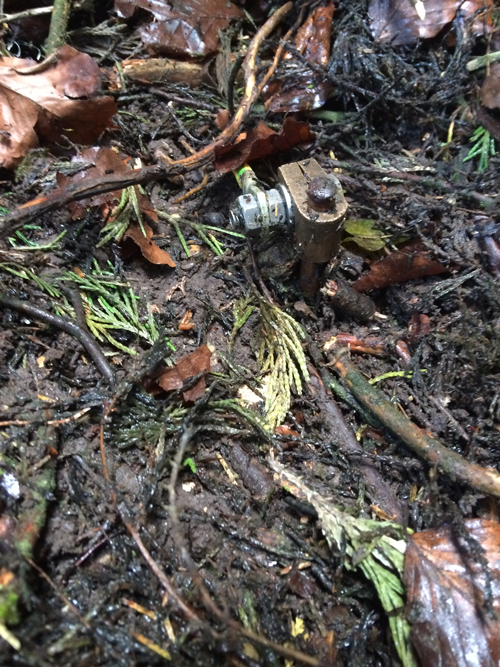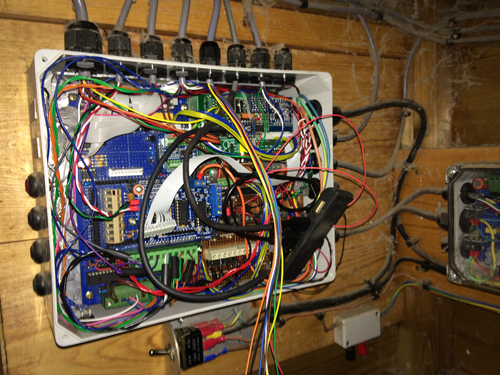After many months on the bench, the time has come to finally fit the Rotator, this means that the the previous fixed install needs some modification, primarily to reduce the mast length for correct rotation. There's also the need to order another mast, since being an American unit, it uses Imperial measurements, it needs an inch and a half pole, so the metric equivilent is 37mm has to be used.

The existing mast is firmly strapped to the coppiced top of a Leylandii hedge, this keeps it out of the way and gives the panel a clear view of the sun. A little pruning is required to ensure that no branches are going to interfere with the rotation.
After fitting with the provided fitting kit (again imperial), the pre terminated cables are routed and connected, the unit is rotated to correctly face north at 0 degrees.

The unit looks quite impressive once mounted along with the top bearing. This should be plenty strong enough for windy days, even though its partly protected by being just under the top of the Leylandii. The two cables are the output from the panel.

After the cables have been clipped and a 16mm CSA earth cable has been terminated onto the metal pole, we can get back to ground level. The earth cable is terminated onto a standard earth spike that that goes in about 1.5 meters. Being a large metalic object stuck in an elevated position, we need to think about lightning. Fried Chickens is not an outcome we want and duly joins the list of things we need to protect against.
The power output from the panel, the motor feed and the encoder sensing cables are run back to the chicken coop and appropriate spacing is provided to try and remove any cross-talk alb the 15 meter run.

Whilst terminating the new cable into the control box, I think again about the need to do a custom PCB sometime soon. Whilst the current system is functional, it can be a bit of a pain to maintain due to all the hard wiring. The cabling currently goes from the appropriate cable gland, around the chassis and to the correct terminal, which gives a less than organised view when changes are needed. The negative of this is that it requires care when closing the box to ensure that none of the wires get trapped as this results in the box not being moisture and mite proof.
Following the cabling up, we re-power up and everything works as required, we now have solar tracking. Since deployment we have not had any problems with battery charge levels, so we wait with baited breath to find out how this will cope with its second winter. Time will tell.

